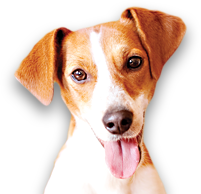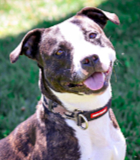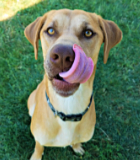DIRTY LITTLE HABIT
- This topic has 0 replies, 1 voice, and was last updated 16 years, 4 months ago by
Mackenzie’s Admin.
-
AuthorPosts
-
January 23, 2009 at 2:11 am #318
Mackenzie’s Admin
MemberBehavior Modification for Dogs Who Eat Feces
As soon as Roscoe the retriever heard the sounds of the resident cat scratching in the litter box, he made a beeline for the bathroom. There was nothing he liked better than moist, warm "kitty cookies" fresh from the cat! Since his follow-up behavior often included planting a big, wet smelly kiss on his guardian’s cheek, this dirty little habit had to be extinguished ASAP.
Coprophagia, the ingestion of feces by an animal, is quite common in dogs. Some eat their own stool (autocoprophagia), some eat the stool of other dogs (intraspecific coprophagia), and some, like Roscoe, eat the stool of other animals (inter-specific coprophagia). While disgusting to humans, fresh stool from healthy, domesticated animals is generally safe to eat. On the other hand, health risks are possible when dogs eat the feces of wild animals who are infested with internal parasites or of free-roaming cats who are infected with Toxoplasma gondii. Unvaccinated dogs are at particular risk for contracting parvovirus or hepatitis if they eat the stool of infected dogs. Most canine coprophagics are four to nine months of age and will outgrow the behavior. However, some dogs find the habit extremely rewarding, making it difficult to extinguish.
Oh, My! Why?
The "whys" of coprophagia are many. Historically, dogs have been scavengers, living at the edge of civilization on the refuse and waste of others. Biologically, the mother dog stimulates her neonates’ elimination by licking their genital regions and consumes their waste for the first three weeks of their lives. Normal investigative puppy behavior includes running nearly everything in the environment through one’s mouth. The pup learns that some things taste better than others. Sometimes, that investigative behavior draws more owner attention than usual, resulting in a great game of chase around the house or yard. When coupled with diarrhea or poor weight gain, coprophagia may be the result of a medical malady such as pancreatic insufficiency, intestinal infections, or malabsorption troubles. Luckily, the exact reason why the dog engages in coprophagia does not need to be determined before a course of treatment can begin.Pick a Plan
When signs of ill health are present, a veterinary workup is necessary. However, most coprophagics are simply healthy dogs who need a program that combines obedience training, careful management, environmental enrichment, and, possibly, a dietary adjustment to achieve success. The treatment plan may vary depending on whether the dog is consuming his own feces or the feces of others. For the autocoprophagic, leash walks for elimination are mandatory. You have to clean up the stool quicker than the dog can eat it. Use of a head halter will give you control of the dog’s head. Teach the dog to hold a sit and stay a few steps away from the pile so you can clean up. After you pick up, reward the dog with a high-value treat before releasing him from the stay. In cases where the dog consumes the stool while eliminating, a muzzle will be necessary. Change the dog’s diet to one higher in fiber, and feed several small meals a day instead of one large one.Dogs who eat the stool of others can be exercised off-lead on their own fenced property but must be leashed and watched when off the premises. The handler must scan the ground a few feet ahead of the dog. When both the dog and the handler spot a pile of feces, utter the command "Leave it," and reward the dog when he averts his eyes from the object of desire.
Cat Cookies
Are cat feces your dog’s dessert of choice? Since the dog is rewarded every time he raids the litter box, managing the situation—putting the box where the dog can’t reach it—will yield success. If your dog respects barriers, gate off one room for the cat’s litter pan. If your dog is large, cut a small opening in the vanity or linen closet or inside a large cardboard box from an appliance store, and set the box up inside. Got a dog who’s wary of the bathtub? Take advantage of that repulsion by placing the litter box in the tub. This solution works for households with small or short-legged dogs, too.There may be a boredom component to this problem behavior. Try enlivening the environment and the dog’s role in it by offering meals stuffed in food-dispensing toys hidden throughout the house or yard. Engage the dog in active sports such as swimming, agility, or long hikes in new territory. Time spent enriching your dog’s life is never wasted and may be the final step in breaking this dirty little habit.
By Jacque Lynn Schultz, CPDT
Companion Animal Programs Advisor
ASPCA National Shelter Outreach -
AuthorPosts
- You must be logged in to reply to this topic.












































